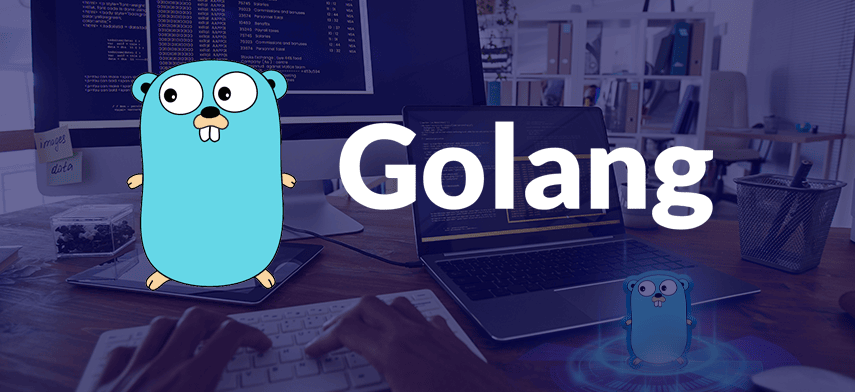Why Go (Golang) is Rising in Popularity Among Developers
 Ahmed Raza
Ahmed Raza
In recent years, the Go programming language, commonly known as Golang, has seen a dramatic rise in popularity within the software development world. Developed and launched by Google in 2009, Go was designed to address challenges faced by developers in building efficient, scalable, and maintainable software. Its simplicity, efficiency, and concurrent processing capabilities make it an ideal choice for a wide range of applications, from web development to cloud infrastructure.
This article explores the key reasons behind Golang’s growing popularity, its unique features, and why it’s an essential language for modern developers.
1. Efficiency and Performance
Golang was designed with performance in mind, offering a blend of simplicity and speed that few other languages can match. Its statically compiled nature translates directly to machine code, enabling Go applications to execute rapidly. This contrasts with languages like Python and JavaScript, which, while popular, often run slower due to being interpreted at runtime or running on virtual machines. In benchmarks, Go frequently demonstrates competitive performance, especially in scenarios that involve heavy computation or high concurrency.
Example Use Case: Go's performance has made it popular for building data-intensive applications like databases and distributed systems. For example, the CockroachDB, a highly scalable distributed SQL database, was built using Go to capitalize on its speed and concurrency management.
2. Built-in Concurrency Support
Concurrency has become a critical feature in modern programming, especially for handling numerous requests or tasks simultaneously, as seen in cloud computing and server-side applications. Go’s unique approach to concurrency with goroutines (lightweight threads) and channels provides a powerful yet simple way to handle multiple tasks in parallel without the complexity of traditional multithreading.
Goroutines are efficient and can scale to thousands or even millions in a single application, making Go particularly well-suited for building high-performance, distributed systems. Unlike threads in languages like Java, goroutines are lightweight, memory-efficient, and managed by the Go runtime, reducing the burden on developers and the operating system.
Example Use Case: Go’s concurrency model is widely used by companies like Uber and Netflix to manage high-volume data pipelines and microservices, where concurrent processing is key to maintaining performance and responsiveness.
3. Simplicity and Readability
One of Golang’s standout features is its simplicity. Go’s syntax is straightforward and minimalistic, designed to reduce the learning curve for new developers and to make code more readable and maintainable. Go intentionally avoids complex features like inheritance, operator overloading, and pointer arithmetic, which can make other languages more difficult to master and troubleshoot.
The language’s simplicity also makes code easier to review, which is essential in large teams or open-source projects. Go’s style guide is strict, and the gofmt tool, which formats code according to the language’s standards, ensures that all code looks and reads in a consistent way. This can reduce errors and improve collaboration, as developers spend less time understanding each other’s code and more time building functionality.
Example Use Case: Many developers and teams use Go for building scalable web services and APIs, where the language’s simplicity leads to faster development cycles and easier maintenance.
4. Cross-Platform Compatibility
Go’s cross-platform compatibility allows developers to build applications that can run on multiple operating systems, including Linux, Windows, and macOS. Go compiles applications into standalone binaries, which means they don’t depend on external dependencies or runtimes to function, making deployment faster and simpler. This feature is especially beneficial in the world of cloud-native applications, where compatibility and portability are essential.
Example Use Case: This cross-platform feature is utilized by Kubernetes, a container orchestration platform originally developed by Google and built using Go, allowing it to be deployed across various operating systems seamlessly.
5. Growing Ecosystem and Tooling
Since its launch, Go has cultivated a robust ecosystem with powerful tools and libraries that support development. The go command provides a suite of tools for managing packages, testing code, building applications, and more. Go’s standard library is extensive, offering developers many packages for handling tasks such as HTTP requests, JSON encoding, and cryptography, which are commonly needed in modern applications.
Additionally, Go’s dependency management and module system have matured over the years, making it easier for developers to manage project dependencies, version control, and package distribution. This strong ecosystem has led to widespread adoption in the open-source community, where many high-quality libraries and frameworks are available for Go developers.
Example Use Case: Popular projects like Docker and Terraform were built using Go and contributed back to the Go ecosystem, encouraging other developers to adopt the language for their own projects.
6. Excellent Community Support and Documentation
One of Go’s greatest strengths is its active and supportive community. Google’s ongoing support and the engagement of thousands of developers worldwide have made it easy to find resources, tutorials, and libraries to solve almost any problem. Go’s official documentation is also extensive and thorough, covering not only the language’s features but also providing guidance on best practices.
Several prominent organizations like Google, Microsoft, and IBM actively contribute to Go’s development and use the language in their own production environments. This large, engaged community has contributed a wealth of third-party libraries and frameworks, expanding Go’s capabilities in fields like web development, machine learning, and cloud computing.
Example Use Case: A developer building a machine learning application might leverage the Gonum package for numerical computation, showcasing the wide range of libraries and tools available to Go developers.
7. Ideal for Cloud and Microservices Architecture
The growing adoption of microservices architecture and cloud-native development has further propelled Go’s popularity. Its efficient memory usage, fast performance, and robust concurrency features align well with the demands of cloud-based and distributed applications. With many cloud providers and container orchestration tools (like Kubernetes) embracing Go, developers find Go to be a natural fit for building cloud-native applications and scalable microservices.
Example Use Case: Companies like Dropbox have used Go to rewrite portions of their services to better handle millions of concurrent connections in the cloud, demonstrating Go’s effectiveness in high-demand, cloud-based environments.
Conclusion: Go’s Place in the Future of Software Development
Go’s rapid rise in popularity is a testament to its unique combination of simplicity, speed, and efficiency. As the industry increasingly emphasizes scalable, cloud-native, and high-performance solutions, Go is poised to play a central role. Its design philosophy focuses on addressing real-world development challenges, making it a practical and powerful language for developers seeking efficiency without sacrificing readability.
Whether you’re building microservices, high-traffic web applications, or infrastructure tools, Go provides the ideal blend of power and simplicity to tackle modern development challenges. For any developer looking to stay at the forefront of software development trends, learning Go is not just beneficial but increasingly essential.
Subscribe to my newsletter
Read articles from Ahmed Raza directly inside your inbox. Subscribe to the newsletter, and don't miss out.
Written by

Ahmed Raza
Ahmed Raza
Ahmed Raza is a versatile full-stack developer with extensive experience in building APIs through both REST and GraphQL. Skilled in Golang, he uses gqlgen to create optimized GraphQL APIs, alongside Redis for effective caching and data management. Ahmed is proficient in a wide range of technologies, including YAML, SQL, and MongoDB for data handling, as well as JavaScript, HTML, and CSS for front-end development. His technical toolkit also includes Node.js, React, Java, C, and C++, enabling him to develop comprehensive, scalable applications. Ahmed's well-rounded expertise allows him to craft high-performance solutions that address diverse and complex application needs.